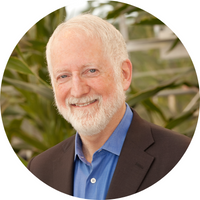Neal Gutterson, Senior Vice President and CTO, Corteva Agriscience™ (January 16, 2020)
Having worked at start-ups as well as Fortune 100 companies, what would you tell an early career chemist about the pros and cons of each?
Whenever young scientists approach me for advice, I encourage them to seek out both experiences, even if they prefer one over the other. I advise them to think about how they want to develop their careers and what they can get out of each type of company. With large companies, you’ll get a depth of experience that will prove invaluable as your career develops. Conversely, with start-ups and small business experience, you’ll have a proximity to the business and breadth of experience that will be beneficial as you develop.
I also tell them that the experiences they’ll gain in an entrepreneurial setting will be beneficial to large companies that are trying to instill that kind of culture on a larger scale. At the same time, small businesses benefit from the rigor, discipline and depth of knowledge that one typically acquires while working for a large company.
At times I have even counseled young scientists to leave our company and go to work for a start-up to broaden their innovation experience. Having a broad understanding of innovation – from new technologies to new business models – is critical to leadership in a growth company. As a mentor, it’s gratifying to see young scientists who take this path and gain this outside experience come back to the business and contribute in new and meaningful ways.
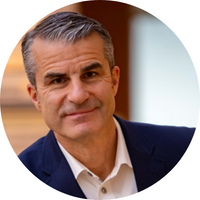
What advice do you have for your mid-career chemists to help them thrive in a dynamic workplace?
Be curious, remain open to new things, stay connected and keep developing your skill base. It is clear that the pace of change is only accelerating. Organizations, project portfolios, etc., are becoming much more fluid, which also means there are more opportunities.
I strongly believe flexible, well-connected life-long learners will be able to fully take advantage of such opportunities and thrive, regardless of the career stage.

Dan Sutherlin, Vice President of Discovery Chemistry, Genentech Research and Early Developmen (June 18, 2020)
During your career at Genentech, you have worked in cardiovascular, oncology, immunology, and neuroscience. If you could develop a blockbuster drug in one of those four areas, which area would you select? And what would it treat?
This might be the toughest question to answer since there are so many disease areas where a transformative therapy would significantly impact patients’ lives. If I had to pick one, it would have to be a drug that effectively treats Alzheimer’s disease. A cure for Alzheimer’s would not only meaningfully improve the lives of so many patients, potentially giving them 10+ years of their lives back, but it would also positively impact the patient’s family members, who often serve as the primary caregivers.

Ellen Kullman, President and Chief Executive Officer, Carbon (March 19, 2020)
What challenges do women chemists encounter in the workplace that men largely don’t experience? What can the chemical industry do to make the workplace more welcoming and rewarding for women?
I co-chair an organization called Paradigm for Parity, which is a coalition of business leaders dedicated to addressing the leadership gender gap in corporate America. Since its launch in 2016, we’ve grown to include over 100 companies, including Merck, AstraZeneca, and Eastman—all of whom have committed to achieving gender parity in leadership by 2030. This speaks to the long-overdue culture shift toward achieving true workforce quality for women.
While we do see momentum now, what motivates this work for me is that women in the chemical industry and otherwise currently face many of the same challenges I faced as I was building my career initially. I’ve seen and experienced firsthand the challenges women encounter in getting promoted and holding leadership roles. It’s critical for companies to be honest in assessing where gender disparities exist in their leadership and throughout their organizations. Companies that don’t pay attention to this lose in the long run.
If companies take steps to think through diversity at every level, we’ll make great strides in making sure women are truly represented not only at the executive level, but across the business, giving women more opportunities to grow.

Karen Carter, Chief Human Resources and Chief Inclusion Officer, Dow Chemical Company (June 25, 2020)
You have said, “The jobs where I grew the most were the ones where I’ve been the most uncomfortable.” Can you share an example of such an instance? And how you overcame your discomfort?
There is a quote that I heard from one of my colleagues and it keeps coming back to me again and again: “A mind that is stretched by a new experience can never go back to its old dimensions.” What a powerful quote.
Growth requires experiences that stretch people’s thinking. Note the word “experience.” And one of the biggest “stretches” in my life was the opportunity to live abroad in Shanghai, China. Every day was an adventure. There’s a difference between being put in a situation and being passive, and purposely moving out of your comfort zone. My husband and I chose to take full advantage of as many local experiences as possible. We lived in a building with both expats and local residents. We shopped at local places. We learned as much Mandarin as possible, which by all accounts wasn’t very much. And there were uncomfortable days. But every day, even if it was uncomfortable – was an opportunity to learn, grow and stretch. This experience has had a significant influence on my career and life.
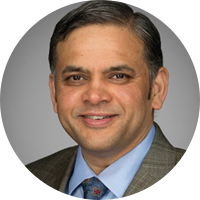
A.N. Sreeram, Senior Vice President & Chief Technology Officer, Dow Chemical Company (April, 16, 2020)
How would you characterize the scientific literacy of the U.S.? How does it impact what you are trying to achieve at Dow?
Many of the problems we face do not have readymade solutions. These problems require more than a superficial level of understanding of engineering and science. We can absolutely improve data literacy in the U.S. We need more people that understand statistics. We need more people who are compelled by data in making decisions – people who extract information from data, who create knowledge from information and ultimately derive wisdom from knowledge.
We need wisdom to anticipate and solve problems. We need better life-cycle analysis incorporated into our thinking. Dow products virtually always provide a benefit in use that far exceeds any environmental burden created during manufacture. They are better than alternatives in most, if not all, parameters. I remain hopeful that education efforts will increase scientific literacy, driving better decisions.
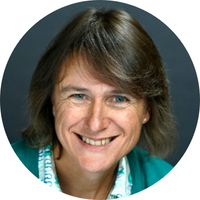
Emma Parmee, Global Head Discovery Sciences, The Janssen Pharmaceutical Companies of Johnson & Johnson (July 9, 2020)
What does the nature of COVID-19 tell you, if anything, about the prospects of such pandemics in the next ten years?
The current pandemic caught us all by surprise with its severity, both in terms of how widespread it is and the number of fatalities it has caused. I know when I first started hearing of SARS-CoV-2 at the beginning of the year, I had assumed at worst it would be like the first SARS-CoV outbreak in 2003, or MERS-CoV in 2012. While these did have a significant impact, they were generally contained: the numbers of cases were in the low thousands, and fatalities in the hundreds worldwide.
I am also reminded of the emergence and impact of HIV in the early 1980s, and more recently Ebola virus disease. Many years of research from pharmaceutical companies, nonprofit organizations, and academic scientists has meant that, while we still do not have a cure or a vaccine for HIV, many people can now live a close to normal life with their viral load well controlled. Similarly, an Ebola virus vaccine was recently approved, a development that will hopefully help us contain future outbreaks of this disease as well.
What the current pandemic reminds us is that new infectious diseases will likely continue to emerge. But what HIV treatments and the Ebola vaccine teach us is that, while the ability of viruses to mutate and render initial treatments ineffective must not be underestimated, with years of research and dedication we can develop effective therapies to combat the viruses.
Thus, while many companies have reduced their emphasis on infectious disease research, I think it is imperative that we continue to invest in this area. And while right now, the pharmaceutical industry has a pivotal role to play in quickly finding treatments and a vaccine for the current SARS-CoV-2 outbreak, we must also think proactively and prepare for future, as yet unidentified coronavirus outbreaks, and continue to invest in infectious disease research in general. History tells us that pandemics like the current coronavirus will happen again, but it also shows us that with dedicated research, we can and will find new medicines to combat them.
Emma Parmee worked for Merck at the time this ACS Boss Talk was published. In November 2020, she left Merck to become Global Head Discovery Sciences at The Janssen Phamaceutical Companies of Johnson & Johnson.

Jennifer Holmgren, CEO, LanzaTech (October 29, 2020)
You once said, “A prediction is nothing more than an extrapolation of the past.” You used that statement to explain how some very smart people such as Lord Kelvin, Thomas Watson, and Bill Gates could make – on occasion -- such thoroughly misguided predictions about the future of science and technology. As you are thinking about the future of your business, how do you avoid falling into that same trap?
One of LanzaTech’s values is to “Be inquisitive”. In our early days, we would laugh that we had a table full of PhD’s and our meetings took forever because while they were all experts in their respective fields, they didn’t fully understand what their peers were working on or indeed how they approached problems. This has enabled us to foster a culture of integrated learning rather than have a team who is dogmatic about the approach to take when tackling a problem. I think this is the key to avoiding the trap of forming predictions from a tightly focused position of expertise. Gathering wide ranging inputs across disciplines, using peers as sources for learning rather than trying to convince them that your way is right. And when you find out you are wrong? Embrace the loss as much as you would the win!
If we didn’t fail or get things wrong, we wouldn’t try again and find the right answer. I think we are very much at risk of falling into that trap right now, with the global climate reports showing scenarios that pin their hopes on a narrow range of solutions. The only way we can avoid falling into this kind of trap is by seeking inputs from a range of sources and not trying convince everyone that there is only one solution, one magic bullet. We need to adopt a technology neutral approach by listening to others from a range of backgrounds, and being curious about all potential solutions, not just those we are experts in.

William Provine, Founder, President & Chief Executive Officer, Delaware Innovation Space (December 17, 2020)
What are some common personality traits you have seen among successful entrepreneurs?
The best and most successful entrepreneurs that I’ve witnessed are very inspirational and passionate leaders who have a high level of grit and determination, with a touch of arrogance. Success is derived from creating a vision and plan that employees, partners, and investors believe will deliver upon its promises, have a good return on investment, and hopefully change the world for the better. Then, the successful entrepreneur gets it done through the maze of challenges and roadblocks that will ultimately appear, or he/she/they quickly kill that venture and start a new one with minimal wasted effort.
You serve on the Board of The Resolution Project, whose mission is to develop socially responsible young leaders and empower them to make a positive impact today. Generally speaking, what are some of the top priorities for this generation of leaders?
Simply put – making a difference in the world is a top priority. The Resolution Project is a great organization, which now supports over 500 social entrepreneurs around the world working on new ventures/startups that drive social change.
As part of the Resolution Project, in addition to being on the Board, I currently mentor several teams: Team Hydroquo+, which collects data in Bangladesh from water pipes to create machine learning algorithms to efficiently treat non-potable water in poverty stricken residential areas; meanwhile Team Sparky has developed and manufactures a novel food dehydrator that dries a diverse array of farm produce ten times faster than the conventional sun drying method. It uses bio-fuel as a source of energy, and it reduces post-harvest loss, which is the leading cause of food insecurity in Uganda.
Every Resolution Fellow that I’ve met and worked with has inspired me with their passion, drive, and commitment to positive social change, and they all remind me that we are all part of the solution.
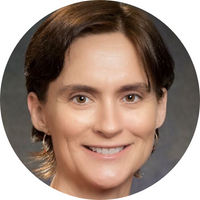
Charlotte Allerton, Head of Medicine Design, Pfizer (February 6, 2020)
For those of us not in the business of discovering and inventing medicines to transform patients’ lives, can you give us a better sense of just how difficult this can be?
The human body has around 20,000 protein coding genes. Layer on top of that epigenetic modulation, post translation modification and other regulatory pathways and the complexity of our human ecosystem is apparent. In addition, human biology exists as a vast interconnected web, and it is almost impossible to perturb one part of it without disrupting the whole system.
Our role is to find which protein/s are fundamental to disease, and then try to design medicines that only impact the relevant protein/s, sparing all the others in order to treat the disease without bringing unwanted side effects. Combine this challenge with the need to manufacture and administer the drug safely, usually orally or subcutaneously, and ensure that it gets to the right places in the human body and the extent of the challenge is clear. It is like finding a needle in a haystack. That is why some of the best scientists in the world have dedicated themselves to discovering medicines – it is a great challenge but a great opportunity to make a difference to human health.
Fortunately, scientific and technological advances have made significant inroads to improving our ability to discover and invent medicines. Capabilities such as functional genomics and induced pluripotent stem cell technology to produce disease-relevant patient-derived cells are broadening our understanding of human disease. Technologies such as DNA-encoded libraries, chemical biology, RNA modulation and protein degradation are expanding the diversity of biological targets that we can work on. And the promise of artificial intelligence and machine learning to build on the vast quantities of clinical and pre-clinical data to help enable smarter decisions around human translation, target selection and modality design could transform our future.

Carlonda Reilly, Vice President and Chief Technology Officer, Kennametal (November 12, 2020)
Among other responsibilities, you are in the business of leading teams. What makes for a successful leader of teams?
The number one principle has to be establishing an environment of trust and collaboration with the people who make up the team - to care about each member, to know the strengths and challenges of each and to help each member do his/her best work. I also think an effective leader is one who can cast a compelling vision, set and articulate clear objectives and provide support where needed, and who will get out of the way and trust the team to execute. Good leaders also take the time to have fun and celebrate the wins with their teams. This is a real key to building a winning culture in the team environment. Those who know me best, know that I have a passion to win and have fun with my teams.
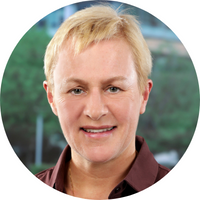
Margaret Faul, Vice President in Process Development, Amgen (August 6, 2020)
In February 2019, Organic Process Research and Development (OPR&D) published an article you co-wrote with Rebecca Ruck titled “Gender Diversity in Process Chemistry.” It was the third most-read paper and the most-read editorial published that year in OPR&D. How did this issue of gender diversity come to be so important to you?
Throughout my career in the pharmaceutical industry, I have seen tremendous advances in science, the complexities of the modalities we pursue, and the speed at which we commercialize innovative medicines to patients. However, during this time, the number of women and minorities in process chemistry has remained low (<20%). A culture of Diversity and Inclusion is important for us to achieve “excellence” in our field since it expands our leadership experiences and enables different approaches to solve problems.
Although this topic has certainly been debated for many years, Rebecca Ruck (Merck, Inc) and I felt that to bring this topic forward it was time to generate the data to allow for broader discussions within the process chemistry community to determine how to address this issue. Our article was published in Organic Process R&D and we are very grateful to Kai Rossen, editor of that Journal, for his support of the publication.
This article has been edited for length and clarity. The opinions expressed in this article are the author's own and do not necessarily reflect the view of their employer or the American Chemical Society.
Copyright 2022 American Chemical Society (All Rights Reserved)

